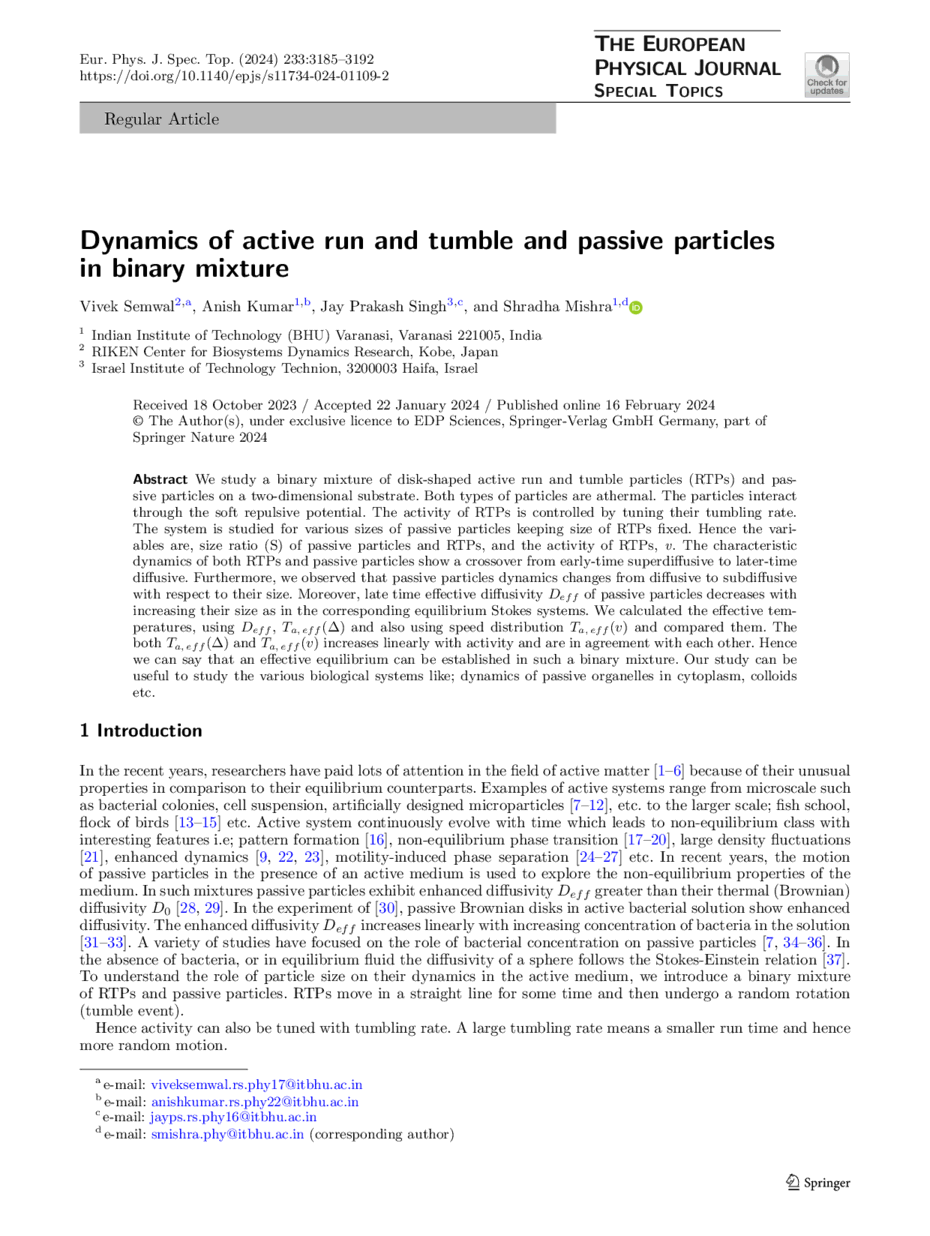https://doi.org/10.1140/epjs/s11734-024-01109-2
Regular Article
Dynamics of active run and tumble and passive particles in binary mixture
1
Indian Institute of Technology (BHU) Varanasi, 221005, Varanasi, India
2
RIKEN Center for Biosystems Dynamics Research, Kobe, Japan
3
Israel Institute of Technology Technion, 3200003, Haifa, Israel
Received:
18
October
2023
Accepted:
22
January
2024
Published online:
16
February
2024
We study a binary mixture of disk-shaped active run and tumble particles (RTPs) and passive particles on a two-dimensional substrate. Both types of particles are athermal. The particles interact through the soft repulsive potential. The activity of RTPs is controlled by tuning their tumbling rate. The system is studied for various sizes of passive particles keeping size of RTPs fixed. Hence the variables are, size ratio (S) of passive particles and RTPs, and the activity of RTPs, v. The characteristic dynamics of both RTPs and passive particles show a crossover from early-time superdiffusive to later-time diffusive. Furthermore, we observed that passive particles dynamics changes from diffusive to subdiffusive with respect to their size. Moreover, late time effective diffusivity  of passive particles decreases with increasing their size as in the corresponding equilibrium Stokes systems. We calculated the effective temperatures, using
of passive particles decreases with increasing their size as in the corresponding equilibrium Stokes systems. We calculated the effective temperatures, using  ,
,  and also using speed distribution
and also using speed distribution  and compared them. The both
and compared them. The both  and
and  increases linearly with activity and are in agreement with each other. Hence we can say that an effective equilibrium can be established in such a binary mixture. Our study can be useful to study the various biological systems like; dynamics of passive organelles in cytoplasm, colloids etc.
increases linearly with activity and are in agreement with each other. Hence we can say that an effective equilibrium can be established in such a binary mixture. Our study can be useful to study the various biological systems like; dynamics of passive organelles in cytoplasm, colloids etc.
Copyright comment Springer Nature or its licensor (e.g. a society or other partner) holds exclusive rights to this article under a publishing agreement with the author(s) or other rightsholder(s); author self-archiving of the accepted manuscript version of this article is solely governed by the terms of such publishing agreement and applicable law.
© The Author(s), under exclusive licence to EDP Sciences, Springer-Verlag GmbH Germany, part of Springer Nature 2024
Springer Nature or its licensor (e.g. a society or other partner) holds exclusive rights to this article under a publishing agreement with the author(s) or other rightsholder(s); author self-archiving of the accepted manuscript version of this article is solely governed by the terms of such publishing agreement and applicable law.





